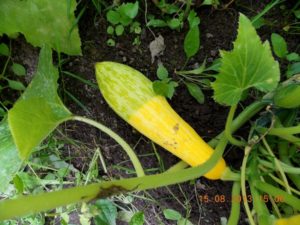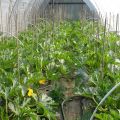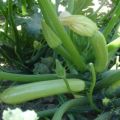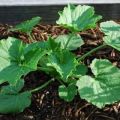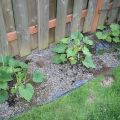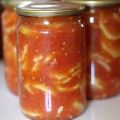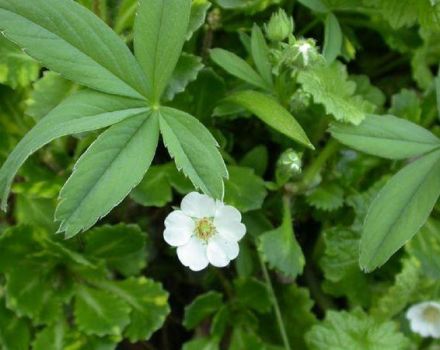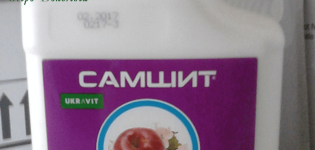Description of the Sangrum f1 zucchini variety, features of cultivation and care
Hybrid zucchini varieties for a long time not a curiosity in the gardens of the country. By combining the genes of common varieties, breeders obtain disease-resistant and undemanding plants. Breeding work is aimed at eliminating the shortcomings that characterize parental varieties. The Sangrum f1 squash, bred by a Dutch breeding company, is known all over the world.
Description of the variety
This is an early maturing variety. The first fruits are harvested 38–40 days after germination. The bush of this hybrid is compact. The leaves are also small.
Fruiting continues throughout the growing season (July-August). One bush yields approximately 4–5 kg of courgettes.
The shape of the fruit is cylindrical. The color of the upper rind is pale green with a characteristic spotting, reminiscent of zucchini. One weighs 350-400 g, and is 18-20 cm long.
Advantages and disadvantages
First of all, Sangrum is famous for its high yield and good taste. It is suitable for cooking various heat-treated dishes and for pickling. Zucchini of this variety retains its taste even after overripe.
Sangrum f1 zucchini pulp contains 5.6% sugars, 7% dry matter, carotene and vitamins of groups B and PP. The seeds of this variety are saturated with biologically active substances, they are used as an anthelmintic.
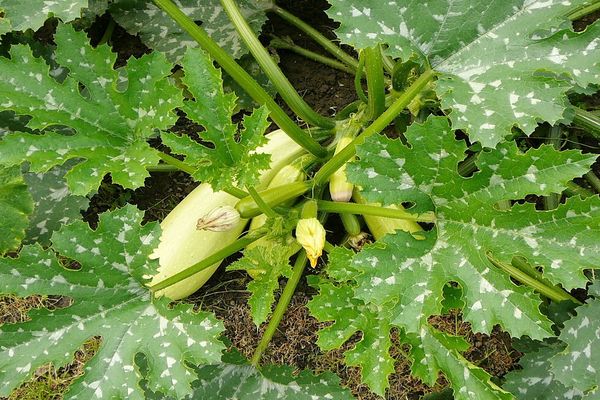
The important advantages of this hybrid are:
- resistance to fungal infections;
- undemanding to growing conditions;
- the ability to quickly recover from adverse conditions in the form of a dry period.
The disadvantage of Sangrum f1 zucchini is the fact that it is impossible to collect seeds from your harvest for planting next year, as they lose varietal properties.
Growing
Subject to the basic requirements of agricultural technology, you can get a higher yield of zucchini. Of course, you should observe the crop rotation, carefully approach the choice of a place for planting this crop. Onions, nightshades, root vegetables and legumes are considered the best predecessors for planting zucchini.
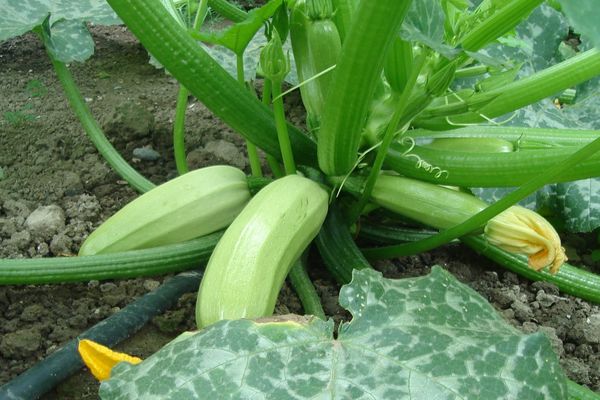
The bed should be located in an area that is well lit throughout the day. The optimal soil is considered to be soils with a neutral pH value, with a light structure and sufficient amount of nutrients. High acidity can be removed with slaked lime, or limestone, spreading them evenly over the garden bed. This procedure should be done in the fall, and not in the spring before planting the plants.
To obtain an earlier harvest, planting is carried out under a film. This hybrid can be grown both with seedlings and without using it.To obtain seedlings, seeds are planted in separate peat pots around mid-April. When planting on open beds, mid - end of May is considered optimal.
For free growth and development of squash bushes, they should be planted at a distance of at least 60 cm from each other in a square-nesting manner. Put 1-2 seeds in each hole. Embedding depth is 4–6 cm.
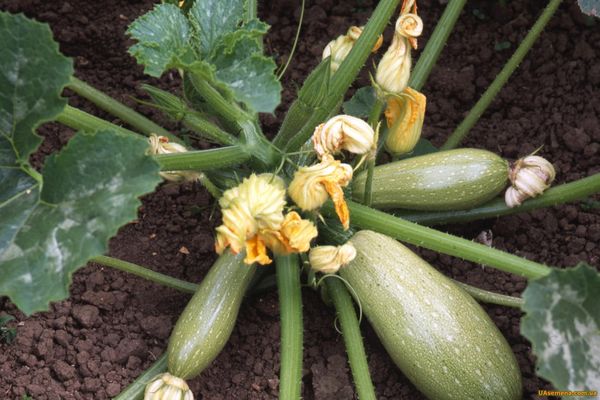
Care features
Zucchini respond well to feeding with a solution of chicken manure, green fertilizers or slurry. As a care, squash requires regular watering, hilling, weeding and loosening the soil.
Pests and diseases
Although Sangrum zucchini is a fairly disease-resistant culture, under unfavorable conditions, it can be affected by bacteriosis, peronosporosis, anthracnose and powdery mildew. Garden pests such as spider mites and melon aphids can adversely affect the development of plants. To combat such problems, they use ready-made preparations or use traditional methods for plant protection.

When the beds with squash are affected by melon aphids, the leaves affected by insects curl and the flowers fall off. In the future, the plant stops growing and dies. You can cope with the invasion of this aphid by spraying the beds with Karbofos or Tychometaphos-3.
Spider mites are widespread throughout the country. The leaves affected by the tick acquire a marbled color with characteristic light streaks. Then the plant turns yellow, and if you do not take action, then subsequently dries up. To get rid of this pest, use Keltan, Isophene or ground sulfur.
Anthracosis often affects plants that are grown in greenhouse conditions, but sometimes zucchini can become infected in open beds. This disease begins with the appearance of yellow-brown spots on all terrestrial parts of the plant. This occurs at high humidity and high air temperatures. For anthracosis, colloidal sulfur, Bordeaux mixture or copper sulfate are used.
Powdery mildew infects zucchini leaves. A kind of white bloom forms on them. Subsequently, the plant dies from disruption of the photosynthesis process. Already at the first signs of this disease, the planted zucchini should be sprayed with colloidal sulfur or disubstituted sodium phosphate. If the disease has affected only single leaves, you can simply cut them off from the plant or grease them with ground sulfur.
Harvesting and storage
Harvesting should be carried out at least 2–3 days, otherwise the fruits will lose the necessary ripeness, and the upper peel hardens.
It is better to use young fruits, as they are easily absorbed by the body. They can be added to the diet of weakened people and children, as well as those who suffer from gastrointestinal diseases. It is recommended for weight loss diets.

Young squashes have a thin outer skin and incompletely formed seeds. Therefore, they can be used for food without removing these parts.
The pulp of these zucchini is tender, light in color, remains juicy for a long time, without coarsening. The fruits are easily detached from the bush, they retain their presentation for quite a long time.
Gardeners reviews
Valentina V., Kaluga: “I like Sangrum zucchini for their compactness of bushes, which makes it possible to plant them in small empty places of my summer cottage. The yield of these zucchini is quite high. It took 2 bags of seeds to provide my family with zucchini not only for the summer season, but also for harvesting for the winter. The taste of pickled zucchini is not inferior to pickled gherkins. "
Anatoly Igorevich, Vladimir region: “I planted Sangrum at my summer cottage, as I heard positive reviews about him.It so happened that there was no opportunity to regularly care for the beds, but the harvest was excellent. "
Anna Moscow region: “The bushes of Sangrum f1 squash do not form long strings, which is very convenient for growing in small areas. They grow quickly and start bearing fruit early. They have a pretty good taste. Plus they are versatile in use. "

